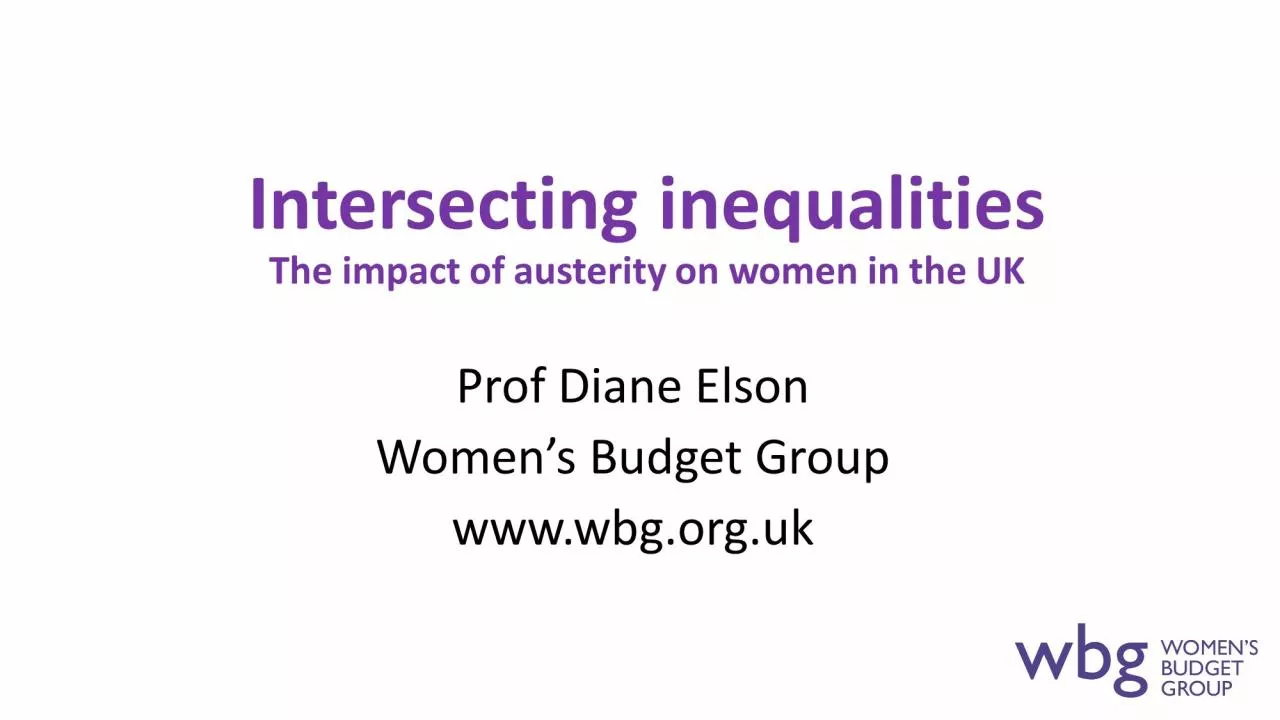

201020 cumulative individual impact of changes in taxes and benefits realterm per annum by 2020 by household income groups gender and ethnicity selected Families with a disabled adult or child particularly badly impacted ID: 1033603
Download Presentation The PPT/PDF document "2010-20 cumulative individual impact of ..." is the property of its rightful owner. Permission is granted to download and print the materials on this web site for personal, non-commercial use only, and to display it on your personal computer provided you do not modify the materials and that you retain all copyright notices contained in the materials. By downloading content from our website, you accept the terms of this agreement.
1.
2.
3. 2010-20 cumulative individual impact of changes in taxes and benefits (percentage of net individual income per annum by 2020) by household income groups, gender and ethnicity (selected)
4. 2010-20 cumulative individual impact of changes in taxes and benefits (real-term £ per annum by 2020) by household income groups, gender and ethnicity (selected)
5. Families with a disabled adult or child particularly badly impacted38% of households include a disabled person but contribute 71% of cuts Households with at least one disabled adult and a disabled child lose over £8,000 (over 18% of their net income). Households with a disabled child are set to lose twice as much as households with non-disabled children
6. Lone mother families even more so
7. Disability Losses and Lone MothersLone mothers lose highest proportion of their income.Disabled lone mothers will lose £7,224 per year by April 2021 (26% of their net income) if they do not have a disabled child, and £10,506 (32%) if they do. Non-disabled lone mothers with a disabled child will lose £7,221 (24% of their net income). For disabled lone mothers, around a third of the cuts comes from the switch to Universal Credit
8. Cuts to public services 25% fewer people receiving state funded adult social care services 1,240 fewer children’s centres than in 201017% of specialist refuges for women in England have closed since 2010. 155 women and 103 children a day on average are turned away from refugesIncreased waiting times, cancellation of appointments and longer ambulance response times in NHS cuts to legal aid, cuts to school budgets, cuts to the police cuts to local transport services.
9. Cumulative real-term impact of spending cuts to services as a % of living standards between 2010 and 2020 by gendered household type.
10. 2010-20 cumulative impact of changes in taxes and benefits and public service spending cuts (percentage of net household income per annum by 2020) by household type
11. Recommendations End the benefit freeze. Review Universal Credit Remove arbitrary caps on benefits Invest in social infrastructure Carry out and publish equality impact assessments Assess the cumulative impact of the budget Account for the combined impact of different cuts Base funding for public services on need
12. Further informationWBG 2018 Pre-Budget briefings on:Tax, Social security, Social care, Health, Education, Work and pay, Pensions, Disability, Housing, Savings, Trade and Investment, Parental leave, Transport, ChildcareWBG and Runnymede Trust (2017) Intersecting Inequalities: The impact of austerity on Black and Minority Ethnic Women in the UK Available on the WBG website wbg.org.uk